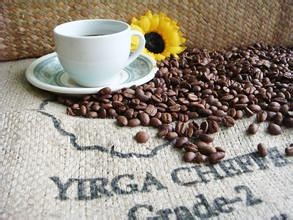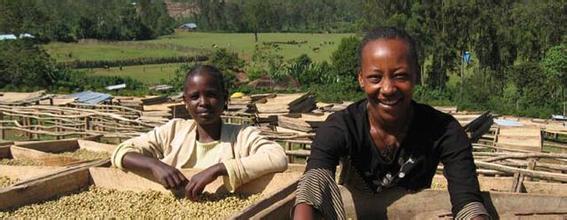What do you need to pay attention to when buying coffee beans online at Tara Pearl Diamond Mountain Manor, Costa Rica?
1. When buying beans online, pay attention to the production date, shelf life, packaging seal, roasting degree of coffee beans, type of coffee beans, and your utensils to determine what beans you want. If you use blue mountain beans to make ESP, it is indeed a more unconventional way, but it is also too unprofessional and expensive, and the taste is not very good.
Beans with a production date of at least half a year.
Coffee beans from the roast are generally bought medium and deep roast, the latter suitable for MOCHA and ESP, the former suitable for siphon, French pressure, flannel, filter and so on.
Coffee beans are divided into caffeinated beans and decaffeinated beans according to their caffeine content. This refers to the caffeine content, the former general caffeine content of 2.5% of the latter general content of 0.05% of decaf coffee domestic see more is ILLY decaf coffee.
Coffee beans are divided into single beans and mixed beans from production.
Single item refers to beans from a single producing area, such as Blue Mountain or Colombia, which are beans from a producing area, that is, a bag full of beans from Colombia. Please be careful when buying this online. Domestic brands cannot have single beans. Domestic beans sell cheap, from the price can be seen, a pack of 250g will not exceed 50 yuan, but the package says what blue mountain, mantining, Colombia and so on, that is baked beans and then add spices to make that flavor beans.
Bean blending is when beans from multiple regions are mixed together for baking.
2. Which outlets are cheap and beautiful?
I'm not a coffee bean merchant, so I can't market myself. But in my opinion, Taobao has a coffee workshop, beans are still very fresh, and then ask more, more comparison. Of course, buying beans to choose merchants, logistics and service attitude are very important.
Country: Costa Rica Fiscal year: 2003
Grade: SHB
Production area: Tara Pearl
Producer: Tarazhu Local Smallholder
Treatment method: washing
Breeds: Kadura, Kaduai
Manor: Diamond Hill Manor
Flavor: Soft orange notes, toast, caramel cocoa sweet
It tastes clean.
Coffee cultivation in Costa Rica was introduced from Cuba in 1779 and exported for the first time in 1820. There are about 32,000 coffee farmers in Costa Rica, with an average cultivation area of less than one hectare (10,000 m2) per farmer. Costa Rica has a population of 4.1 million (2006), 82,500 hectares of coffee cultivation area, an annual production of 1.7 million bags (60kgs per bag), and an annual domestic consumption of 380,000 bags, with an average annual consumption of 5.5 kgs per person, which is higher than Japan (consumption of 4 kgs). Costa Rica is the first country to introduce coffee into Central America. It has a long history and a complete coffee organization system from production to sales. Because it is located in the Central American Strait, there are many volcanoes in the territory, it has the natural advantages of sunshine and land, and the climate is coordinated by the Pacific Ocean and Atlantic Ocean currents and sea breezes at the same time. The coffee produced has the characteristics of local micro-climate and terroir conditions. In terms of quality and quantity, Costa Rica's coffee has always been recognized by the world and has been rated as one of the world's high-quality coffees. Costa Rican coffee has been cultivated for 200 years, first planted in Poas and Barva volcanic slopes, today known as the Central Valley (Central Valley), the main seven coffee producing areas are from northwest to southeast, along the inland central plateau and distribution. Fertile volcanic ash, mild temperatures and steady rainfall are among the factors that have made coffee a staple crop in Colombia. The seven regions are Tarrzu, Tres Rios, Orosi, Central Valley, West Valley, Turrialba and Brunca.
Costa Rica has a long history of coffee cultivation, but in the past 10 years, the more advanced "dry" treatment method has become a trend, collectively referred to as "honey treatment" new method, the use of scraper to adjust the degree of pulp scraping function, output with color from Liao Liao
Important Notice :
前街咖啡 FrontStreet Coffee has moved to new addredd:
FrontStreet Coffee Address: 315,Donghua East Road,GuangZhou
Tel:020 38364473
- Prev

Where can I buy coffee beans online? Where can I buy coffee beans? Fine washing treatment of Caesar Louis Manor
1. When buying beans online, you should pay attention to the production date, shelf life, packaging and sealing, the roasting degree of coffee beans, the types of coffee beans, and your utensils to determine what kind of beans you want. If you use blue mountain beans to make ESP, it is indeed a maverick way, but it is also too unprofessional and expensive, and the taste is not very good. The production date must be at least
- Next

Where can I buy coffee beans online? Where can I buy the Tarazu Diamond Mountain Manor in Costa Rica?
1. When buying beans online, you should pay attention to the production date, shelf life, packaging and sealing, the roasting degree of coffee beans, the types of coffee beans, and your utensils to determine what kind of beans you want. If you use blue mountain beans to make ESP, it is indeed a maverick way, but it is also too unprofessional and expensive, and the taste is not very good. The production date must be at least
Related
- Detailed explanation of Jadeite planting Land in Panamanian Jadeite Manor introduction to the grading system of Jadeite competitive bidding, Red bid, Green bid and Rose Summer
- Story of Coffee planting in Brenka region of Costa Rica Stonehenge Manor anaerobic heavy honey treatment of flavor mouth
- What's on the barrel of Blue Mountain Coffee beans?
- Can American coffee also pull flowers? How to use hot American style to pull out a good-looking pattern?
- Can you make a cold extract with coffee beans? What is the right proportion for cold-extracted coffee formula?
- Indonesian PWN Gold Mandrine Coffee Origin Features Flavor How to Chong? Mandolin coffee is American.
- A brief introduction to the flavor characteristics of Brazilian yellow bourbon coffee beans
- What is the effect of different water quality on the flavor of cold-extracted coffee? What kind of water is best for brewing coffee?
- Why do you think of Rose Summer whenever you mention Panamanian coffee?
- Introduction to the characteristics of authentic blue mountain coffee bean producing areas? What is the CIB Coffee Authority in Jamaica?

